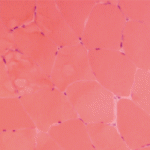
New-onset malignancies can mimic rheumatic disease, and viral infections may present with rheumatic symptoms.
Image Credit: Dmytro Zinkevych/shutterstock
CHICAGO—David Daikh, MD, PhD, professor of medicine at the University of California San Francisco and chief of the Rheumatology Division at the San Francisco VA Medical Center, said the overlap between malignant disease and rheumatic disease means rheumatologists should stay aware that more may be going on than just a rheumatic disorder.
He made his remarks in a session on rheumatic disease “mimics” at the American College of Rheumatology’s 2015 State-of-the-Art Clinical Symposium in May in a session that also covered statin-induced myopathy and infections that might bring on arthritis.
Malignancies
Dr. Daikh said rheumatologists can play an important role in catching malignancies early.
“Rheumatoid and musculoskeletal symptoms can be the initial manifestation of cancer, meaning we may be the first-line diagnosticians,” he said. New-onset malignancies can mimic rheumatic disease, and patients with rheumatic disease can be at increased risk of having early, subclinical cancers.
A malignancy can bring on rheumatic and musculoskeletal disease through primary or metastatic disease’s direct or indirect involvement of musculoskeletal structures, and through activation of autoimmune responses, he said.
Paraneoplastic syndromes can show rheumatic manifestations—skin and connective tissue symptoms, paraneoplastic arthritis or vasculitis—and malignancy that’s linked with using antirheumatic therapy.
Sclerodermatous skin changes, for example, have been associated with breast, ovarian, pulmonary and gastrointestinal cancers, and Raynaud’s phenomenon can also be a main manifestation of a malignancy.
“Carcinoma polyarthritis”—an inflammatory neoplastic arthropathy similar to late-onset RA—has been linked to solid tumors.
It’s a two-way street, Dr. Daikh said: RA, Sjögren’s syndrome and inflammatory myopathies can bring an increased risk of malignancy.
An association has been found between dermatomyositis and malignancy, particularly in those older than 45, with most cancers presenting within a year before or after the myositis diagnosis.
If an older patient has an unexplained or atypical myositis and responds poorly to therapy, an aggressive work-up of signs and symptoms is in order, Dr. Daikh said.
In one of his cases, a 59-year-old man with typical signs of dermatomyositis was put on prednisone. After two weeks, he reported some improvements, but then also reported abdominal pain and nausea. He immediately got an abdominal CT, and multiple liver masses were found.
“The take-home message that I’ve had from my patients,” Dr. Daikh said, “is that my threshold has to be lower for going beyond age-appropriate screening.”
Statin-Induced Myopathy

Dr. Mammen

